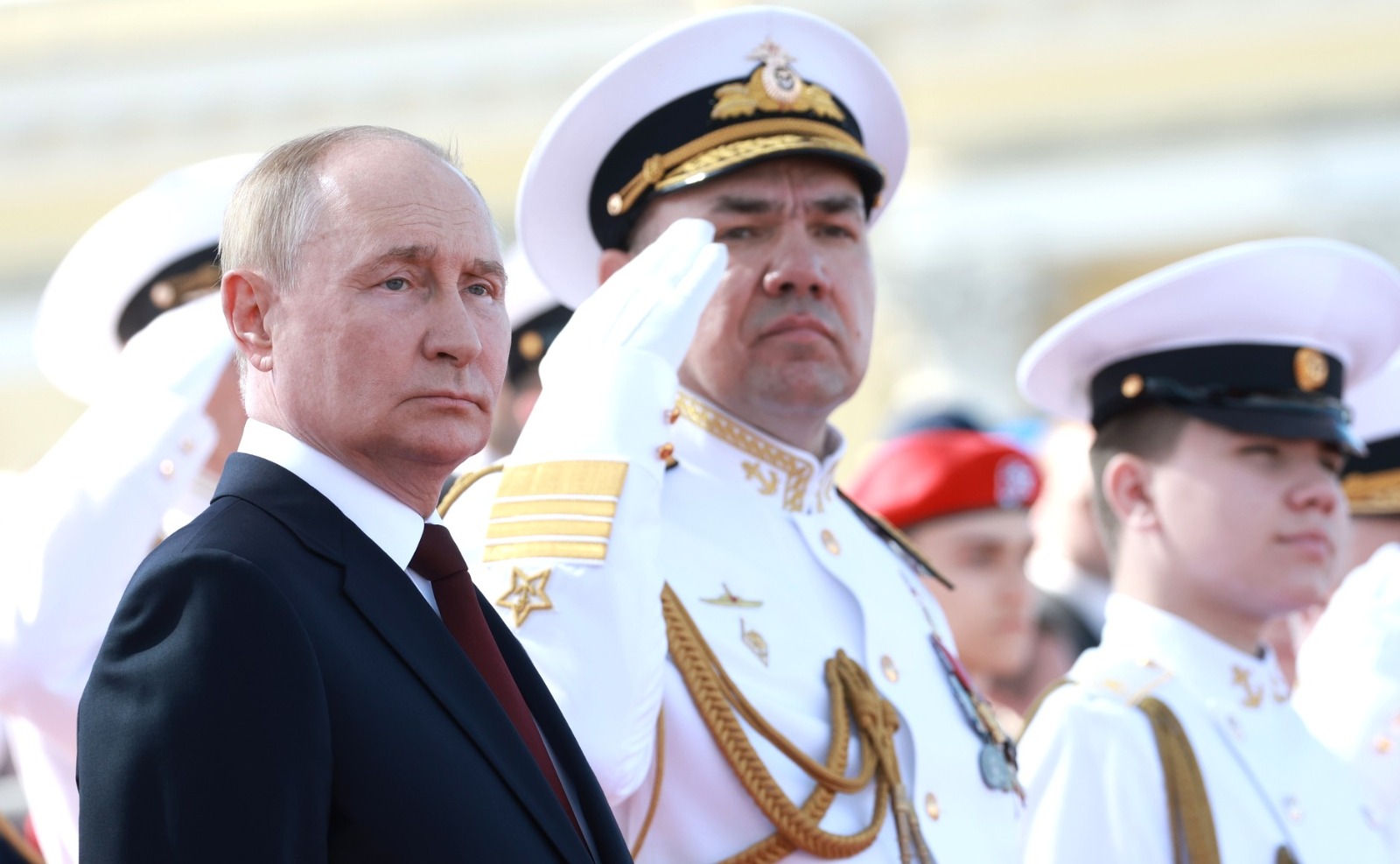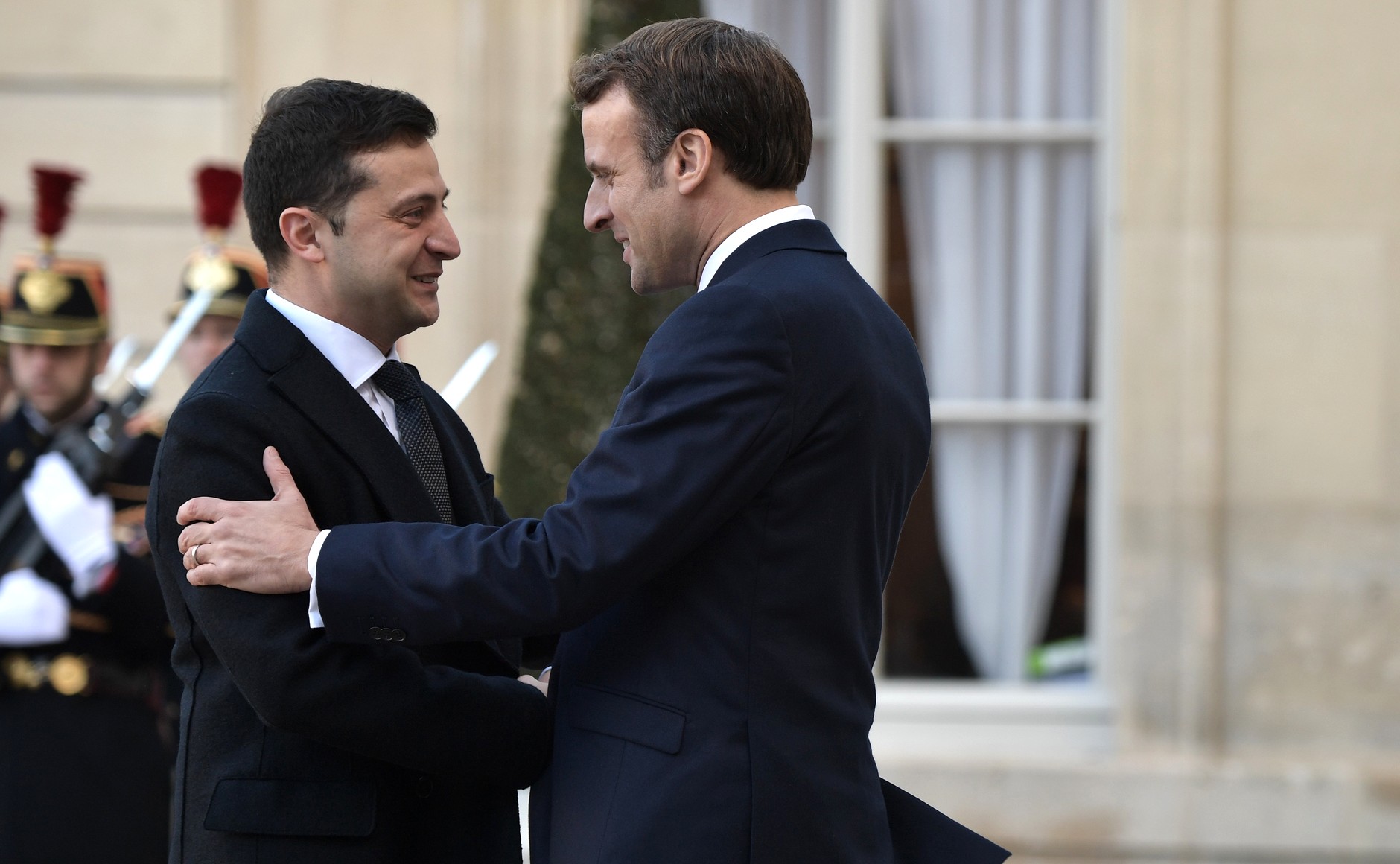OPED By Air Marshal Anil Khosla (R)
In an unexpected move, on Aug. 6, Ukraine surprised the world by launching a bold, pre-emptive offensive attack on Russian territory. Reportedly, over 1000 Ukrainian troops, along with armor, crossed into Kursk Oblast, a Russian region that borders Ukraine to the southeast.
Ukraine’s cross-border attack named “Operation Krepost” on Russia’s Kursk region is the most significant incursion by Ukrainian forces into Russian territory since the start of the war.
Speaking at the Yalta European Strategy (YES) forum, Former Dutch Defence Minister Kajsa Ollongren highlighted the need for the global military community to learn from Ukraine’s experience, noting that its tactics and strategies will one day be studied in military academies around the world.
In this operation, Ukraine claims to have seized over 1,000 square kilometers of territory and captured several settlements and hundreds of Russian soldiers. The Kursk attack is distinct in the scale of resources used by Ukraine and its highly secretive nature.
The event represents a turning point in the war and global geopolitics, shifting the initiative temporarily from Moscow to Kyiv. It has sparked widespread debate, highlighting the conflict’s potential for escalation and geographical expansion and raising questions about the underlying objectives behind this move and its possible future repercussions.
Surprise, Shock & Awe
Any move into Russia required a surprise. The Ukrainian attack on Kursk was a stunning display of surprise in modern warfare.
By employing a mix of operational secrecy, deception, and tactical maneuvering, Ukraine achieved a surprising advantage.
Ukraine had been engaging Russian forces in the eastern regions around Toretsk and Pokrovsk, giving an impression that its primary focus remained there and diverting attention away from the northern border with Kursk.
Ukraine also exploited the gaps in stretched-out Russian deployment by attacking an area with lesser defenses. In contrast to previous minor ones with irregular forces, the sheer magnitude of the incursion misled Russian military planners, leaving them in shock and awe at the audacity of the Ukrainian troops.
The plans were kept secret, shared only with a select group of generals and security officials. The attack was executed with remarkable speed and efficiency, limiting Russia’s ability to mobilize reserves and respond effectively in the early stages. This swift strike allowed Ukrainian forces to capture territory and establish control over critical areas before a complete Russian response could be coordinated.
Intentions & Objectives
Ukraine aimed to shift the momentum of the war by launching an offensive into Russian territory. Strategically, Ukraine aimed to divert Russian forces from other critical fronts, such as the eastern regions of Toretsk and Pokrovsk, where Russia had been advancing.
While the complete success of this diversion is debated, Ukraine’s offensive has forced Russia to reassess its deployments and react to the threat. Ukraine’s objectives could also be to weaken Russia’s military capability, capture territory, and disrupt Russian supply lines.
Some analysts also speculate that holding Russian territory might give Ukraine better leverage in peace negotiations in the future.
Besides, Ukraine needed to boost its morale after months of defensive operations. A successful offensive into Russia would showcase Ukrainian capabilities and counter Russian propaganda about an inevitable victory.
These factors combined to encourage Ukraine to take the risk of crossing into Russia and launching the most significant cross-border attack of the war.

Impact On Russia
The Ukrainian attack on Kursk has had a significant effect on Russia, both militarily and politically. It has forced Russia to divert resources, exposed its military vulnerabilities, and increased internal political and psychological pressure.
The Kursk Offensive has further stretched the already heavily engaged Russian military on multiple fronts, further complicating ongoing Russian offensive operations. Ukraine’s capture of territory in Kursk, including several settlements, is a blow to Russian morale and undermines the Russian invincibility.
However, it has also significantly boosted Ukrainian morale, providing a much-needed psychological advantage. This also posed logistical challenges, as Ukrainian forces targeted vital supply lines and infrastructure.
The Kursk attack is a psychological blow to the Russians, raising fears of further incursions and challenging the Kremlin’s portrayal of the war as distant from Russian territory.
The shock of the incursion could also erode public support for the ongoing conflict as casualties rise and domestic security is threatened. The attack puts internal pressure on the Russian government.
Russian Response
Russian President Vladimir Putin called the incursion “a large-scale provocation” and responded by declaring an emergency, imposing heightened security measures in these areas, and launching retaliatory counterattacks.
Russia mobilized additional troops, mainly from regions close to Kursk, such as Belgorod and Bryansk, to stabilize the situation and prevent further Ukrainian advances. Russia escalated its aerial bombardments across Ukraine, focusing on critical infrastructure, military installations, and supply lines.
These colossal airstrikes aimed to disrupt Ukraine’s operations and cripple its logistics. Several missiles (including Kinzhal, Kh-101, and Iskander missiles) and drones attacked 15 of Ukraine’s 24 regions.
Russia also deployed more drones and missile systems to target Ukrainian cities far from the front lines. Russia organized ground counteroffensives to reclaim the territory lost to Ukrainian forces in the Kursk region.
These counterattacks aimed to regain control of settlements captured by Ukraine and reinforce border defenses. Alongside traditional military responses, Russia reportedly increased cyber-attacks on Ukrainian infrastructure and government systems, aiming to weaken Ukraine’s command and control capabilities.
Diplomatically, Russia described the Ukrainian attack as a significant provocation, with President Putin labeling it as part of Ukraine’s broader strategy to destabilize Russia. The Russian government used the Kursk attack to rally domestic support for the war effort and called on international partners to limit support for Ukraine.

Ukraine’s Supporters
Several nations and organizations provided critical assistance to Ukraine. The U.S. is Ukraine’s most prominent supporter, providing billions in military aid, including advanced weaponry, intelligence, and training.
The U.S. has supplied systems like HIMARS and air defense platforms, which are essential to Ukraine’s defense against Russian advances. Most NATO members, particularly those in Eastern Europe, like Poland, the Baltic States, and Romania, have provided substantial military aid, logistical support, and training.
The European Union has also contributed financially, providing billions in aid packages. The U.K. has been a critical supporter, delivering advanced weapons systems and training Ukrainian forces. It has also played a significant diplomatic role, pushing for continued Western support for Ukraine. Canada has offered military and financial assistance to Ukraine, providing artillery systems, armored vehicles, and drones.
It has also imposed significant sanctions on Russia and supported diplomatic initiatives against the invasion. Western defense contractors, particularly from the U.S., have supplied Ukraine with essential technology and equipment.
Civil society movements and non-governmental organizations in countries supporting Ukraine have also raised funds and provided humanitarian assistance. These state and non-state supporters have enabled Ukraine to continue resisting the Russian invasion, providing a vital backbone of military, economic, and diplomatic support.
Behind-The-Scenes Support
In this instance, a debate has arisen about the direct or indirect involvement of the behind-the-scenes supporters. Washington says it was not informed about Ukraine’s plans ahead of its Aug. 6 incursion into Kursk.
The United States has also said it did not take any part in the operation. Russia claims that the United States’ involvement in Ukraine’s incursion into Russia’s western Kursk region was “an obvious fact.” Russia also asserts that Western weaponry, including British tanks and U.S. rocket systems, have been used by Ukraine in Kursk.
Media sources have reported that the United States and Britain have provided Ukraine with satellite imagery and other information about the Kursk region in the days after the Ukrainian attack.
The intelligence was aimed at helping Ukraine keep better track of Russian reinforcements that might attack them or cut off their eventual withdrawal back to Ukraine.
Crystal Gazing
Ukraine’s advance into Kursk would culminate due to a combination of the Russian response, the number of casualties, and extended lines of communication. The Ukrainian army will probably be unable to hold all of the Russian territory it has advanced on.
Kyiv is contemplating a longer-term occupation to use the land as a bargaining chip. This will take a lot of Ukrainian resources, and enforcing a long-term occupation would depend on factors like Ukraine’s priorities, the availability and spare ability of resources, and the severity of the Russian response.
The choices include consolidation on the captured terrain and partial or complete withdrawal. Partial withdrawal and consolidation seem to be the logical possibility.
The initial successes achieved by Kyiv in the Kursk attack have further intensified the war and raised questions about its future. The Ukrainian offensive into Russian territory has had a profound impact on the course of the war.
On one hand, it has boosted the morale of the Ukrainian army and sent a strong message to the West about Ukraine’s ability to take the offensive initiative. On the other hand, the offensive has elicited mixed reactions in Russia. The event has far-reaching repercussions on the entire war, further complicating the situation in the coming period.
The war in Ukraine is a complex game, with many intertwined factors influencing the course of events. Both sides are undertaking concurrent campaigns that consume enormous resources (manpower, munitions, and supporting systems).
Surge operations for short durations are possible, but sustaining them for long durations is doubtful. The future of this war mainly depends on the extent of continued Western military and political support to Ukraine.
- Air Marshal Anil Khosla PVSM, AVSM, VM, is a former Vice Chief of Air Staff (VCAS) of the Indian Air Force and AOC in C of Eastern Air Command.
- He tweets at: @AnilKhosla16




